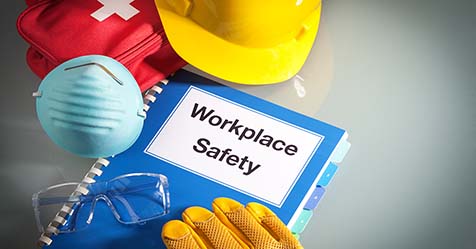Cleaning professionals will encounter situations in which sanitizers or disinfectants are necessary to protect public health. However, we must always keep in mind while these are very powerful cleaning agents that are necessary in many situations, they can also produce unfortunate, and even harmful, results.
The good news is that there are options available that go far beyond selecting a product based on either sodium hypochlorite (bleach), quaternary (quat), or another disinfecting or sanitizing agent.
While any disinfectant or sanitizer must be registered with the U.S. Environmental Protection Agency (EPA), within these parameters, manufacturers of disinfectants and sanitizers offer products that are effective, yet produce fewer residues or emissions—like volatile organic compounds (VOCs)—and have an overall reduced impact on the environment.
Availability of Green Disinfectants
Currently, there are no EPA-registered disinfectants designated as green in the United States. However, this is all about to change as the EPA has developed a program to allow green-certified disinfectants through the Safer Choice—formerly Design for the Environment—program, and is now working with states to help bring these products to market later this year.
Until this happens, however, cleaning professionals can consider certain alternatives that have proven to be effective at eliminating germs and bacteria to minimize the harmful impact of traditional disinfectants and sanitizers. But before we explore these options, consider these four important disinfection tips:
- Only use a disinfectant or sanitizer if and when necessary. Unfortunately, disinfectants have a history of being overused or used incorrectly. These products are designed to kill pathogens, so by nature, they can be potentially dangerous to users, building occupants, and the environment, especially if appropriate precautions are not taken.
- Use disinfectants or disinfectant alternatives in a two-step process: First clean the surface to remove soils, and then apply the disinfectant to kill pathogens, germs, and bacteria.
- Consider your environment. There are situations where it may be a legal requirement to use a disinfectant or sanitizer, such as in certain areas of a hospital or in food preparation areas. In these cases, you must adhere to regulations and should not substitute an alternative to an EPA-registered disinfectant.
- Do your research. When an EPA-registered disinfectant is necessary, make sure the disinfectant kills the germs and bacteria that need to be addressed. For example, if there is concern about swine flu (H1N1), ensure that the kill claim listed on the label indicates the product is designed to kill that particular virus.
Consider the Alternatives
Regarding disinfectant alternatives, those manufactured with hydrogen peroxide, citric acid, acetic acid, or other active ingredients that fulfill the screening process developed by EPA’s Safer Choice program have a reduced impact on the user and the environment. These products are now used in many schools and many areas of medical and other facilities, as the ingredients have been identified as safer to use and are proving to be effective, as well.
Another entirely chemical-free option is the use of ozone or steam vapor. As for steam vapor, the germ-killing ability depends on various factors, but primarily, the temperature the system creates. Water should be heated to 250 degrees Fahrenheit or more to be effective. Note that when using steam, it may still be necessary to apply a disinfectant to the surface after cleaning to further protect occupants.
Spray-and-vac systems offer a third nonchemical option. While the developer of these systems does not recommend their use without cleaning solutions or disinfectants, independent laboratory tests have found that these cleaning systems can be effective at removing many germs, bacteria, and pathogens without chemicals. However, it may still be necessary to apply a disinfectant to further protect occupant health.
Safer Methods for Standard Disinfectant Use
There are other ways cleaning professionals can use traditional disinfectants and still reduce their impact on the environment. Consider these tips:
- Read the label and follow all directions, including proper dwell time and dilution rates.
- More is not better. A more concentrated disinfectant does not clean or kill pathogens better; instead, it wastes product and money, and increases environmental impacts.
- Choose a disinfectant with a more neutral pH value (closer to seven) to reduce the risk of irritating the eyes and skin of users who unintentionally come in contact with the disinfectant.
Whether you choose an alternative to using traditional disinfectants or just want to minimize your facility’s carbon footprint, there are options available that can simultaneously protect both the environment and the health of building occupants.



